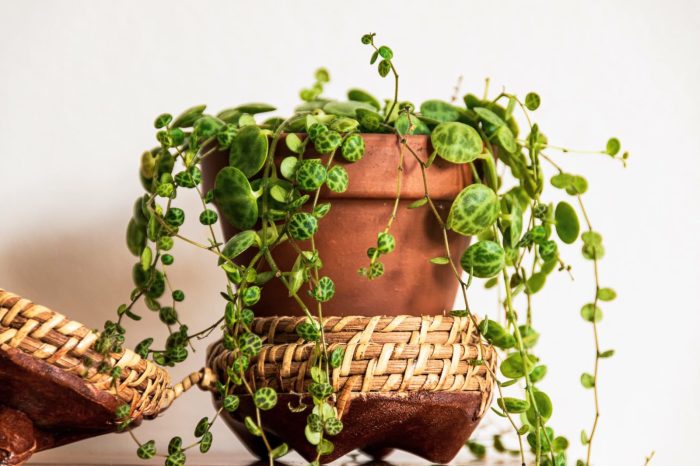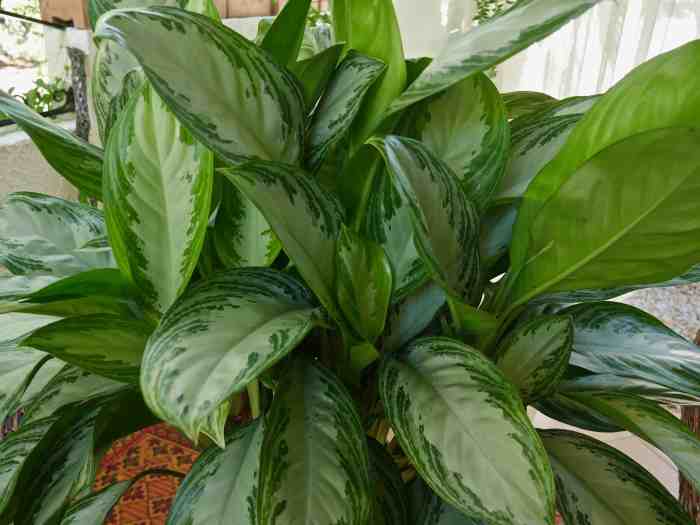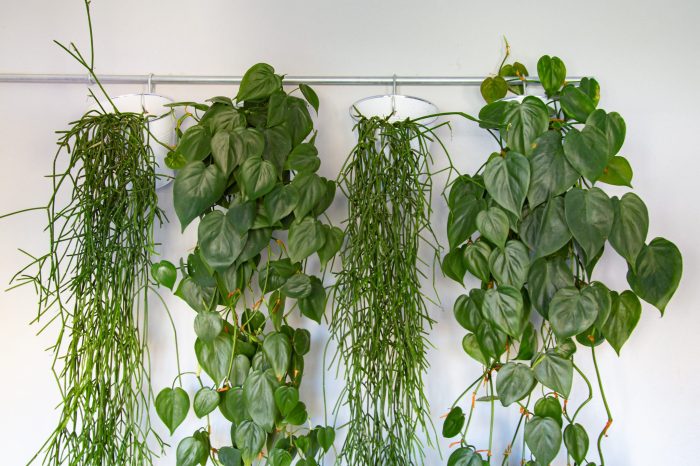Easy trailing plants indoor are a captivating addition to any home, offering a touch of nature’s beauty while adding a touch of greenery to your living space. Whether you’re a seasoned plant enthusiast or just starting your gardening journey, these trailing plants are a perfect choice for creating a vibrant and inviting indoor environment.
From lush cascading vines to trailing succulents, there’s a wide variety of easy trailing plants indoor to choose from. With their graceful growth habits and minimal care requirements, these plants are an excellent way to bring life and color to your home without overwhelming your schedule.
Plant Recommendations

Trailing plants are an excellent choice for adding a touch of greenery and elegance to any indoor space. They can be used to create a lush, cascading effect or to add a pop of color to a shelf or table.
For those seeking to add a touch of greenery to their indoor spaces, easy trailing plants offer a convenient and visually appealing solution. Whether adorning windowsills, trailing down shelves, or cascading from Hanging Plants Indoor , these versatile plants bring life and freshness to any room.
With minimal care and attention, trailing plants can thrive indoors, creating a lush and inviting atmosphere.
Here are a few of the best trailing plants for indoor environments:
Pothos
- Pothos is a fast-growing vine that is easy to care for. It prefers bright, indirect light but can tolerate low light conditions.
- Pothos is available in a variety of colors, including green, yellow, and white. It is also known for its air-purifying qualities.
Spider Plant
- Spider plants are another easy-to-care-for trailing plant. They prefer bright, indirect light but can also tolerate low light conditions.
- Spider plants produce long, trailing stems that can reach up to 3 feet in length. They are also known for their ability to produce plantlets, or “spiderettes”, which can be used to propagate new plants.
String of Pearls
- String of pearls is a unique and beautiful trailing plant that is native to South Africa. It has long, trailing stems that are covered in small, pearl-shaped leaves.
- String of pearls prefers bright, indirect light and well-draining soil. It is important to water this plant sparingly, as it is susceptible to root rot.
Care and Maintenance

To ensure thriving trailing plants indoors, proper care and maintenance are crucial. Essential requirements include watering, lighting, fertilization, and pruning.
Watering should be done regularly, allowing the soil to dry out slightly between waterings. Overwatering can lead to root rot, while underwatering can stunt growth. Bright, indirect light is ideal, as trailing plants often prefer shade or partial shade. Fertilization should be done monthly during the growing season with a balanced liquid fertilizer.
Indoor trailing plants add a touch of elegance and freshness to any room. For those looking for easy-care options, easy to care for indoor hanging plants are a great choice. These plants are tolerant of neglect and require minimal attention, making them ideal for busy individuals or those new to indoor gardening.
Trailing plants, whether hung or placed on shelves, bring a sense of tranquility and nature indoors, creating a soothing and inviting atmosphere.
Pruning
Regular pruning is essential to encourage bushy growth and prevent leggy stems. Prune trailing plants by pinching back the tips of the stems or cutting them back to a desired length. This promotes new growth and keeps the plants looking full and vibrant.
Decorative Uses
Trailing plants are versatile additions to indoor decor, offering endless possibilities for adding color, texture, and vertical interest to a space. They can be incorporated into a variety of arrangements, from hanging baskets and wall planters to trellises and windowsills.
Hanging Baskets
Hanging baskets are a classic way to showcase trailing plants. Suspend them from the ceiling or a plant hanger to create a cascading effect. Choose plants with long, flowing stems and colorful foliage, such as spider plants, pothos, or ivy.
Wall Planters
Wall planters are another great option for trailing plants. They can be mounted on walls or fences to create a vertical garden. Choose plants with trailing stems and small leaves, such as string of pearls, creeping Jenny, or ferns.
Trellises
Trellises provide support for trailing plants to climb and grow upwards. This can create a dramatic focal point in a room or add height to a small space. Choose plants with tendrils or aerial roots, such as philodendrons, hoyas, or monsteras.
Troubleshooting

Indoor trailing plants can face various challenges that may hinder their growth and appearance. Understanding common problems and implementing practical solutions can help ensure their well-being.
Common issues include yellowing leaves, stunted growth, and pests. Each problem requires specific attention and tailored solutions.
Yellowing Leaves
Yellowing leaves can indicate several underlying issues, such as:
- Nutrient deficiency:Leaves may turn yellow due to a lack of essential nutrients, such as nitrogen or iron.
- Overwatering:Excessive watering can suffocate roots, leading to yellowing leaves.
- Underwatering:Drought stress can also cause leaves to turn yellow.
To resolve yellowing leaves, assess the plant’s watering schedule and ensure it receives adequate sunlight and nutrients.
Stunted Growth, Easy trailing plants indoor
Stunted growth in trailing plants can be caused by:
- Lack of light:Insufficient sunlight can hinder plant growth.
- Rootbound:When roots become overcrowded in a pot, growth may be restricted.
- Pest infestation:Pests can damage roots or leaves, affecting plant growth.
To address stunted growth, provide adequate light, repot the plant if rootbound, and control any pest infestations.
Pests
Common pests that can affect trailing plants indoors include:
- Aphids:Small, soft-bodied insects that suck sap from leaves.
- Spider mites:Tiny, spider-like creatures that cause leaves to turn yellow and drop.
- Mealybugs:White, cottony insects that attach themselves to stems and leaves.
To control pests, use insecticidal soap or neem oil, and isolate infected plants to prevent spread.
Easy trailing plants indoor are a great way to add life to any room. They can be used to create a lush, tropical atmosphere or to simply add a touch of greenery to a space. If you’re looking for the easiest hanging plants indoor, you’ll want to consider pothos, philodendron, and spider plants.
These plants are all easy to care for and can tolerate a wide range of conditions. For more information on the easiest hanging plants indoor, visit hangingplantsindoor.com .
Unique and Unusual Varieties: Easy Trailing Plants Indoor
Expand your indoor greenery with these uncommon and visually striking trailing plants that will add a touch of botanical intrigue to your space.
These plants boast unique growth patterns, foliage textures, and captivating colors, offering a departure from the usual trailing suspects. Their care requirements may vary slightly, but they all thrive in well-drained soil and indirect light.
Ceropegia Woodii (String of Hearts)
With its heart-shaped, variegated leaves, the Ceropegia Woodii resembles a cascade of tiny hearts. Its delicate vines can reach up to 12 inches in length, making it ideal for hanging baskets or trailing over shelves.
Senecio Rowleyanus (String of Pearls)
This whimsical succulent features plump, spherical leaves that resemble strings of pearls. Its cascading growth habit adds a playful touch to any indoor space. It prefers bright, indirect light and infrequent watering.
When decorating your home with easy trailing plants indoor, consider also easy low light hanging plants . Low light hanging plants are ideal for spaces with limited natural light. They can create a lush and inviting atmosphere while purifying the air.
When selecting trailing plants for indoor spaces, consider factors such as light availability, humidity, and desired growth habit to ensure they thrive in your environment.
Dischidia Nummularia (String of Nickels)
With its round, coin-shaped leaves, the Dischidia Nummularia resembles a string of tiny nickels. Its trailing vines can grow up to 3 feet in length, making it an excellent choice for adding vertical greenery to walls or trellises.
Peperomia Prostrata (String of Turtles)
This unique Peperomia species has shield-shaped leaves with a distinctive turtle-like pattern. Its compact growth habit makes it suitable for terrariums or small pots. It prefers bright, indirect light and moderate watering.
Rhipsalis Baccifera (Mistletoe Cactus)
Unlike most cacti, the Rhipsalis Baccifera has long, trailing stems that resemble tangled threads. Its delicate foliage and small, white flowers add an ethereal touch to any indoor environment. It thrives in bright, indirect light and infrequent watering.
Final Conclusion
Incorporating easy trailing plants indoor into your home décor is not just about adding greenery but also about creating a sense of tranquility and harmony. Their ability to purify the air and reduce stress makes them a valuable asset to any living space.
So, embrace the beauty of nature and bring the outdoors in with these easy-to-care-for trailing plants.
Question & Answer Hub
What are the most popular easy trailing plants indoor?
Some of the most popular easy trailing plants indoor include pothos, philodendron, spider plants, and string of pearls.
How often should I water trailing plants indoor?
Trailing plants indoor generally prefer moist soil but not soggy soil. Water them when the top inch of soil feels dry to the touch.
What is the best lighting for trailing plants indoor?
Most trailing plants indoor prefer bright indirect light. However, some varieties, such as pothos, can tolerate low light conditions.